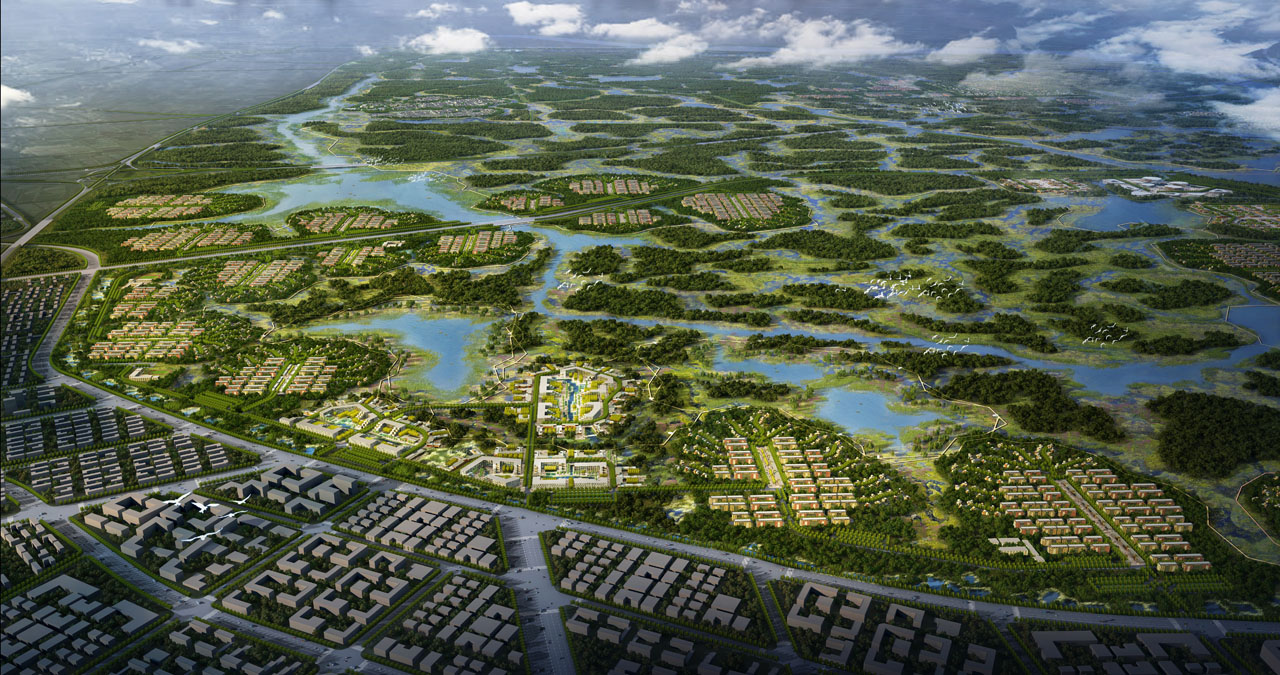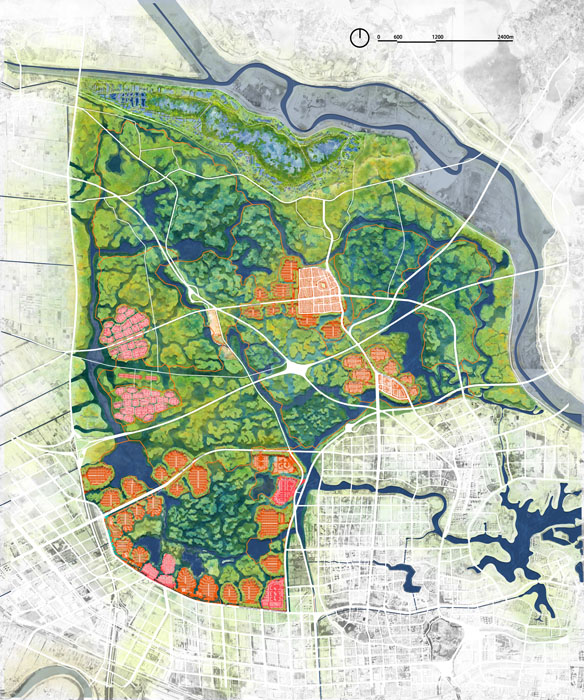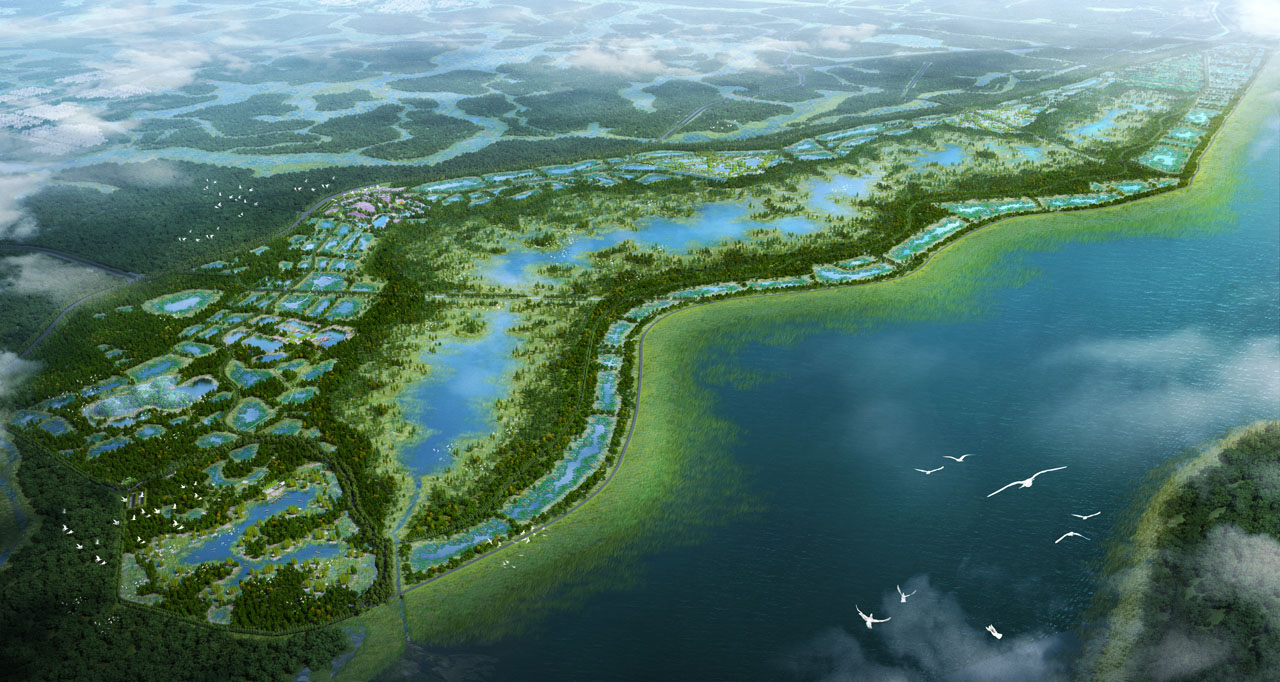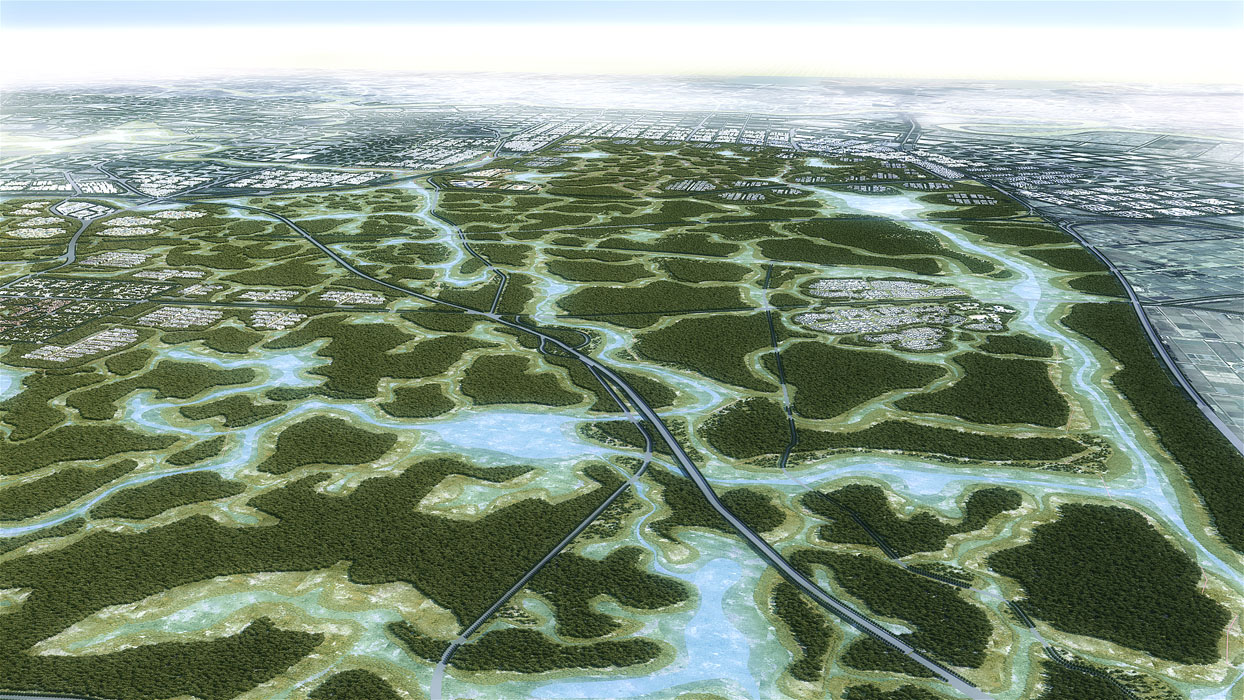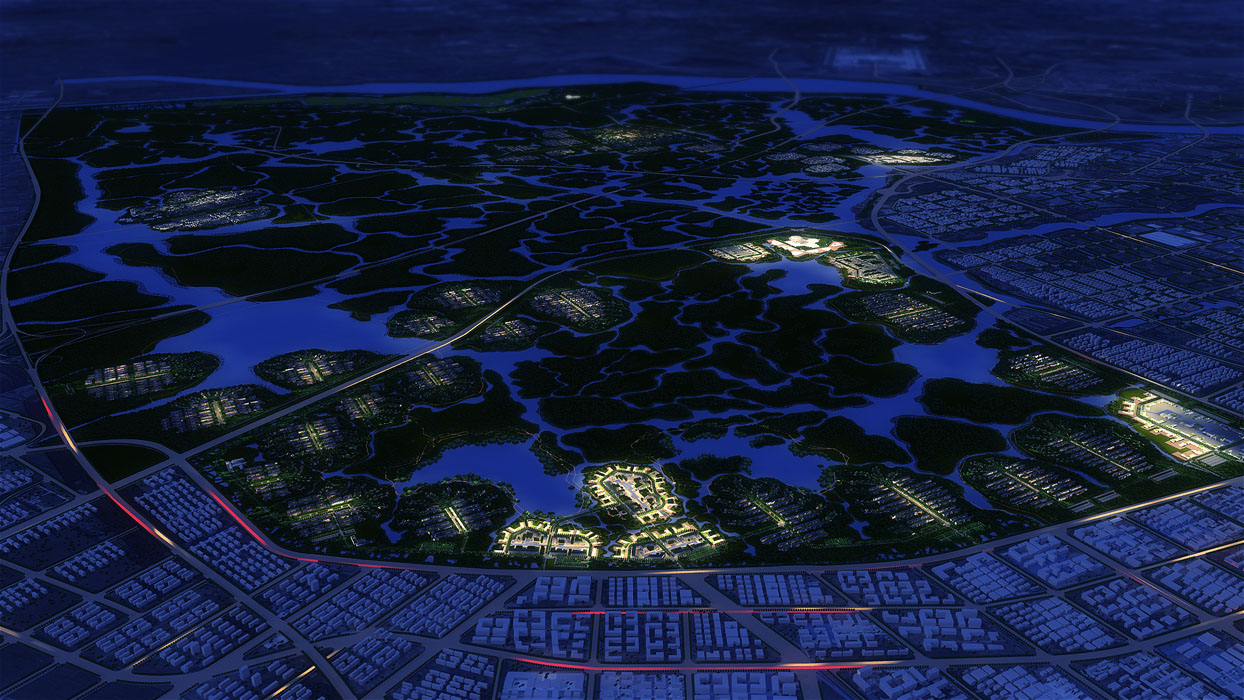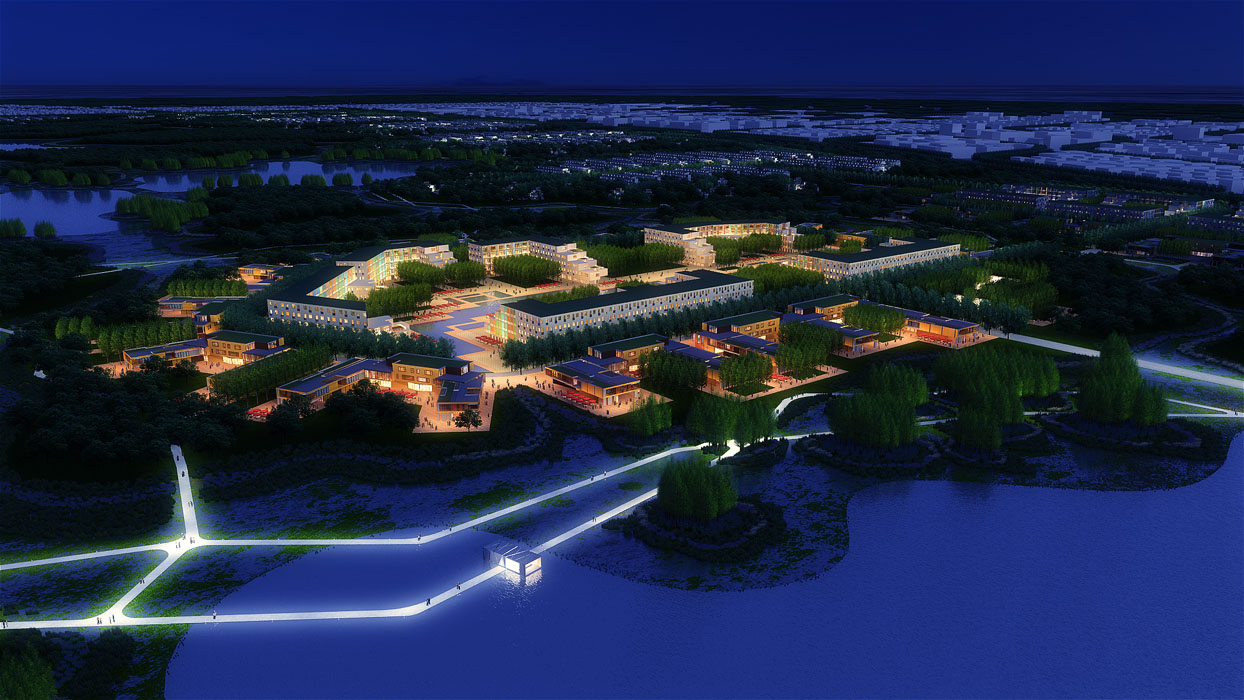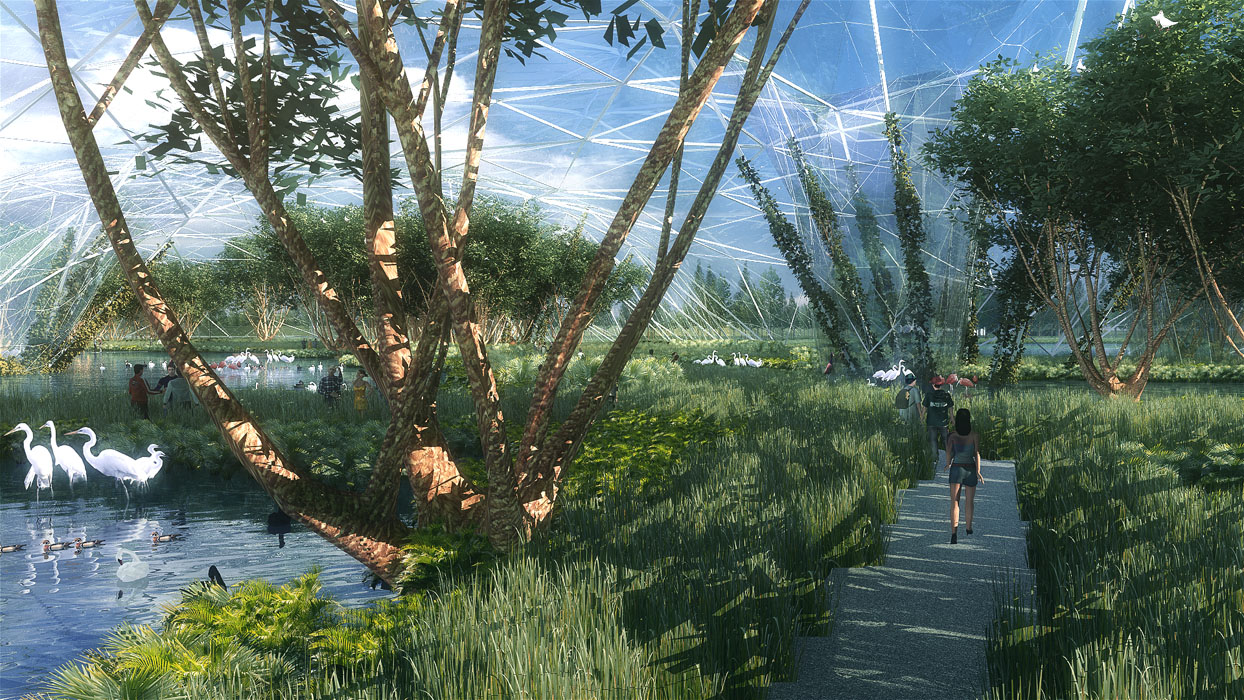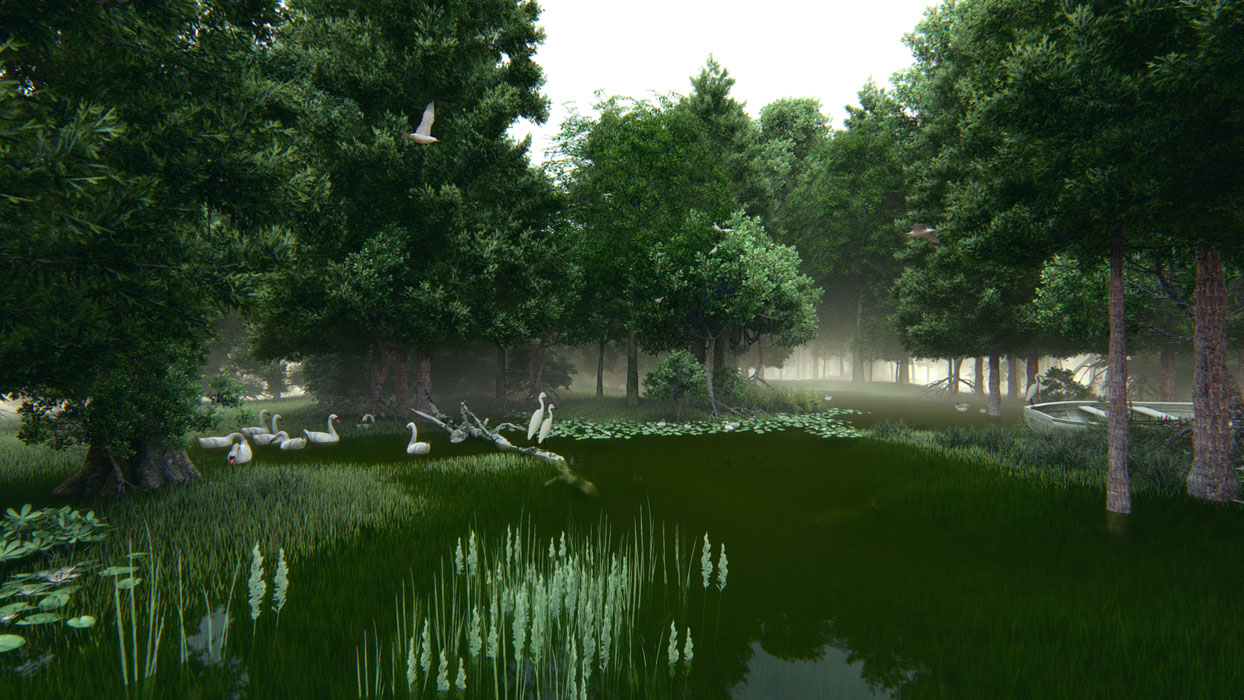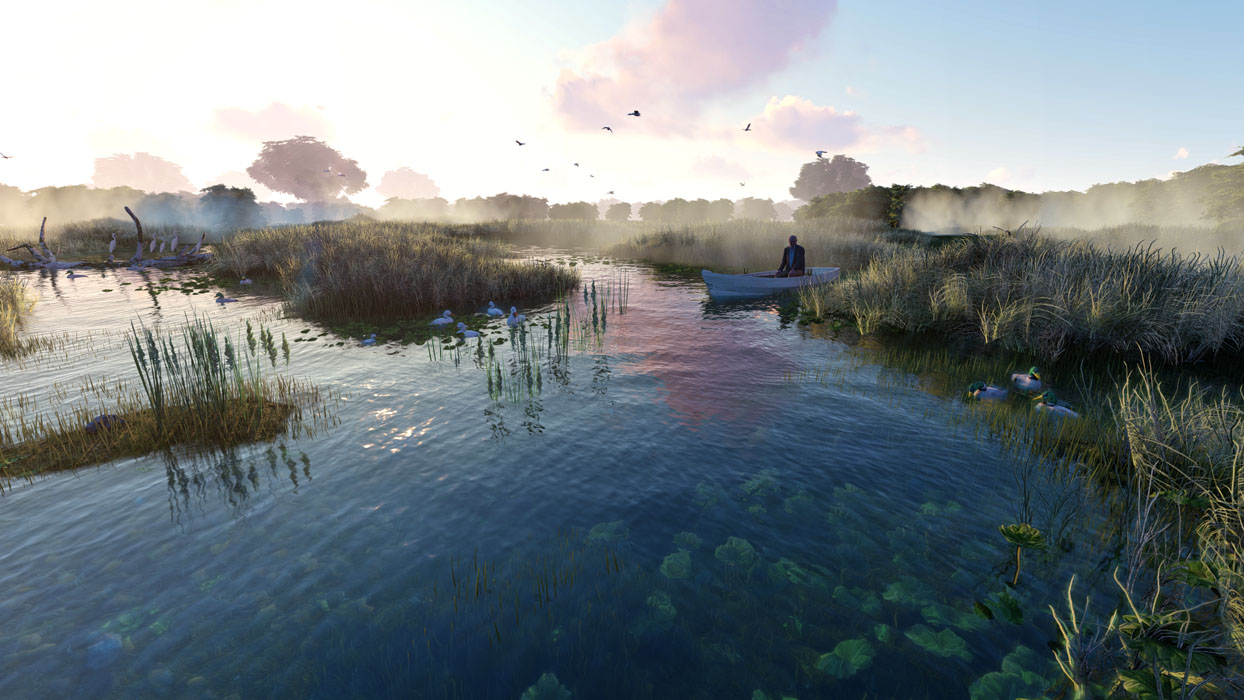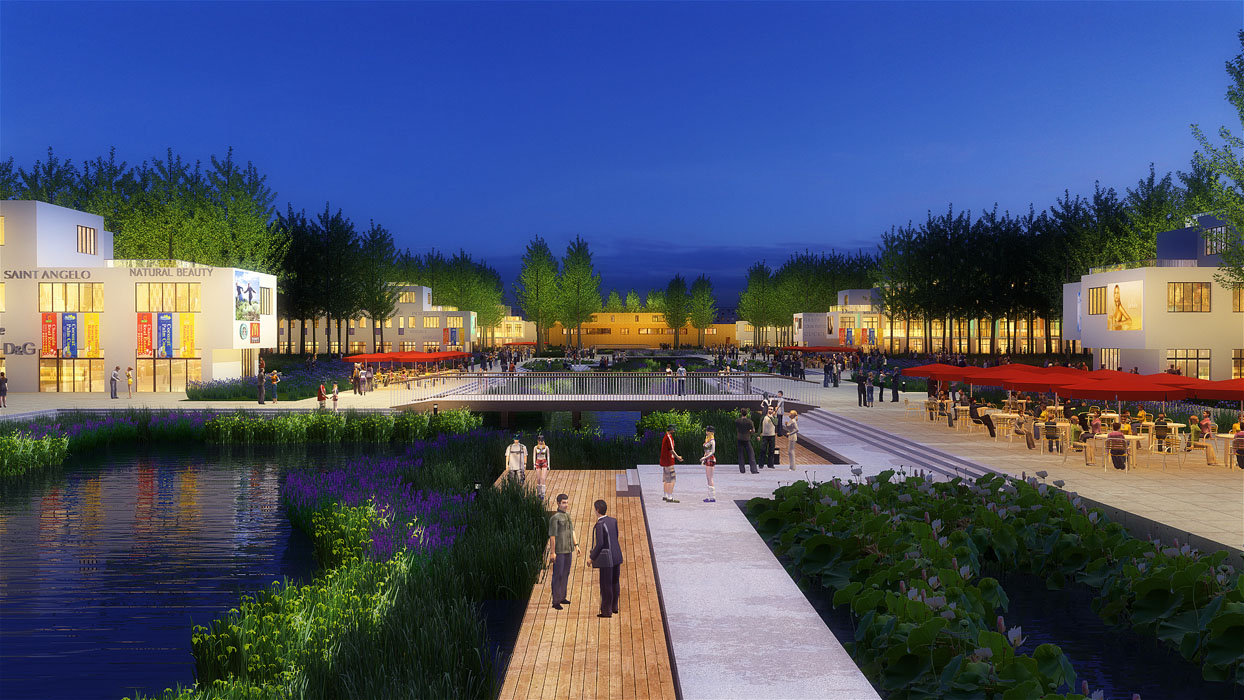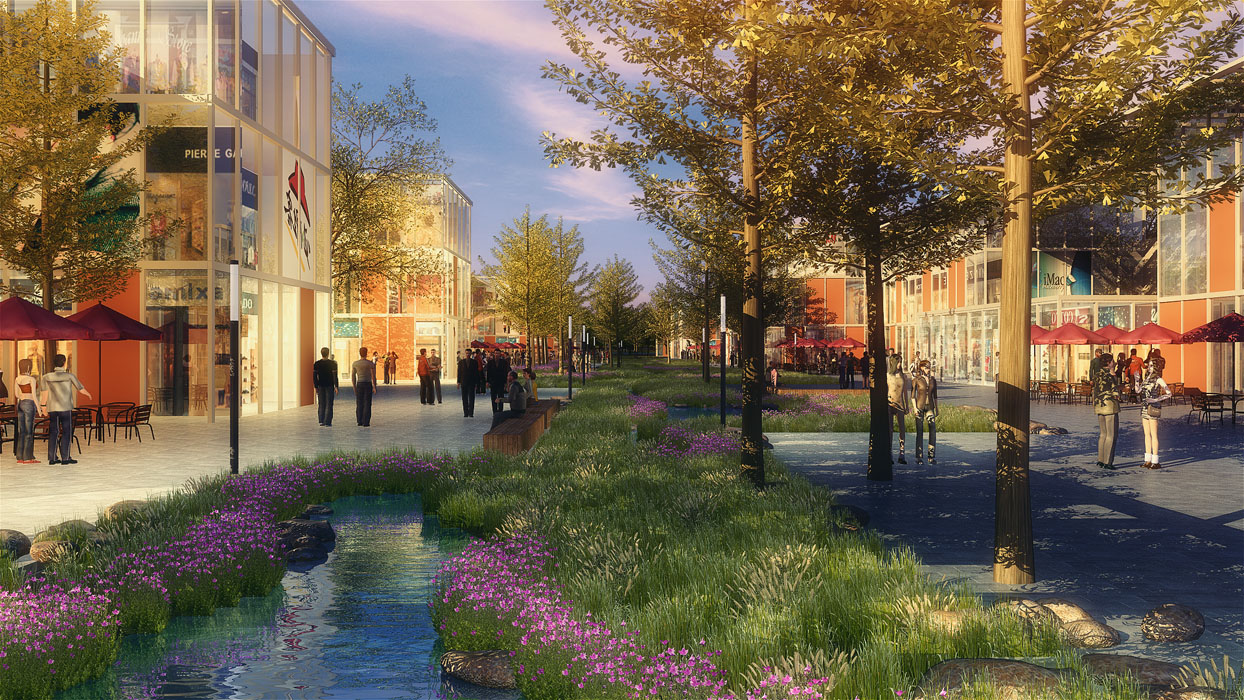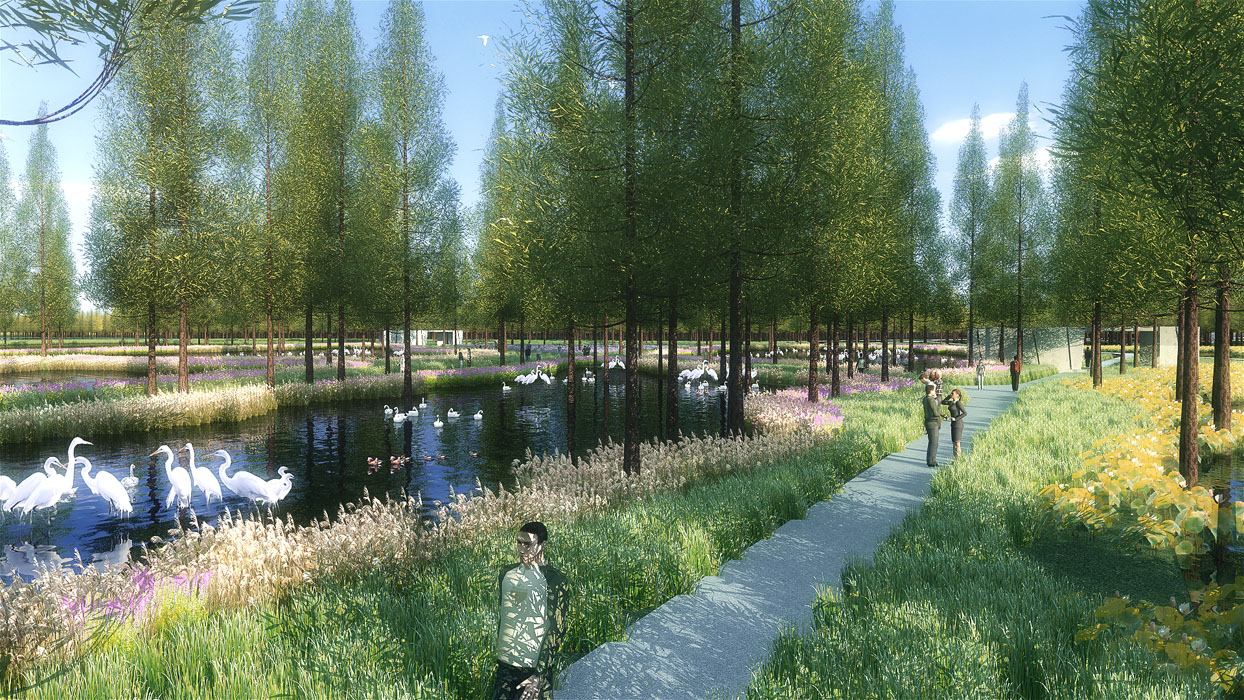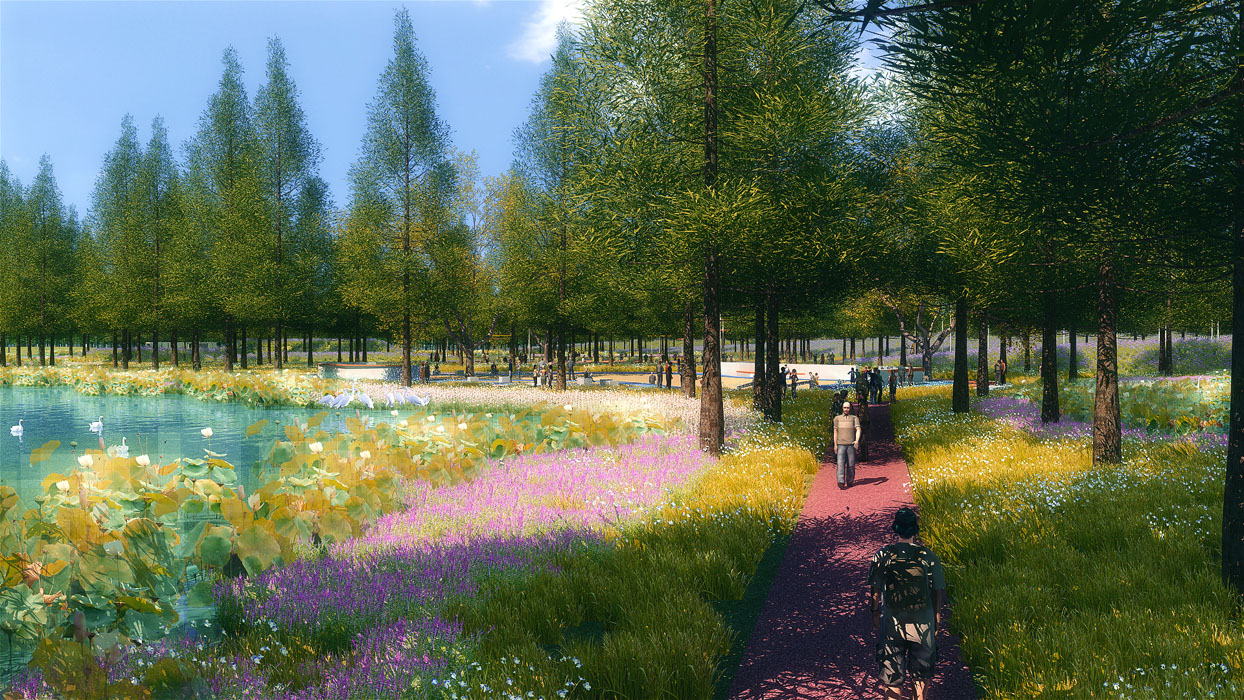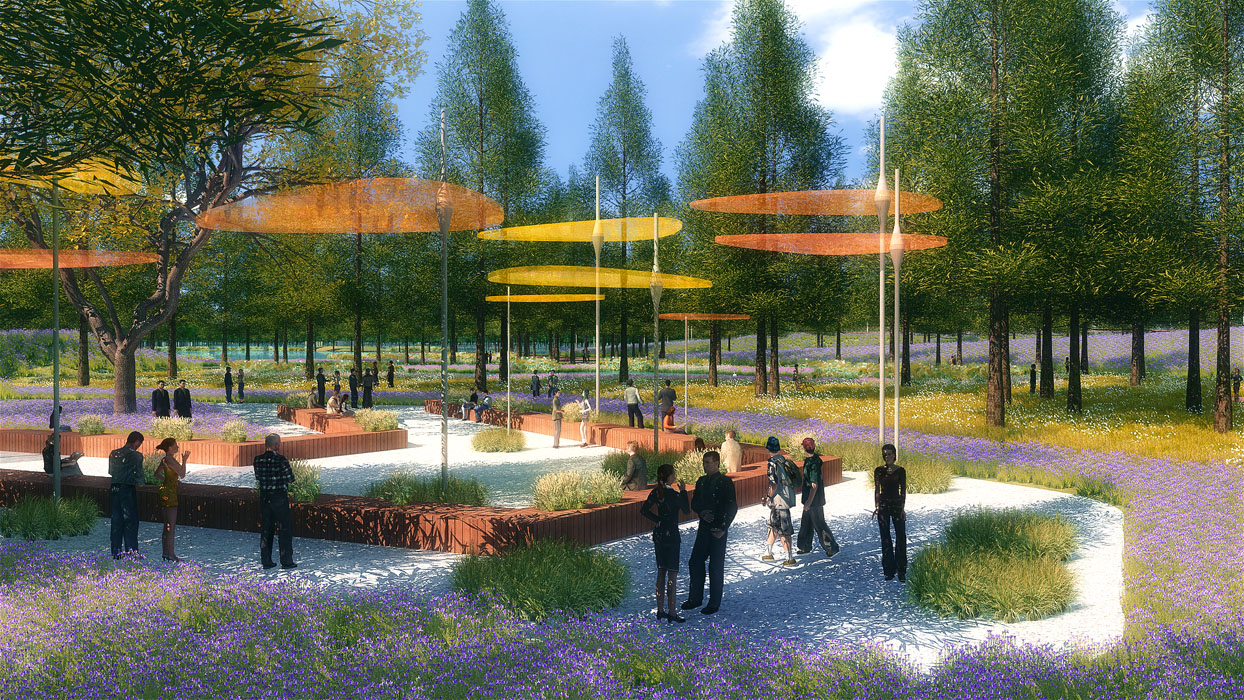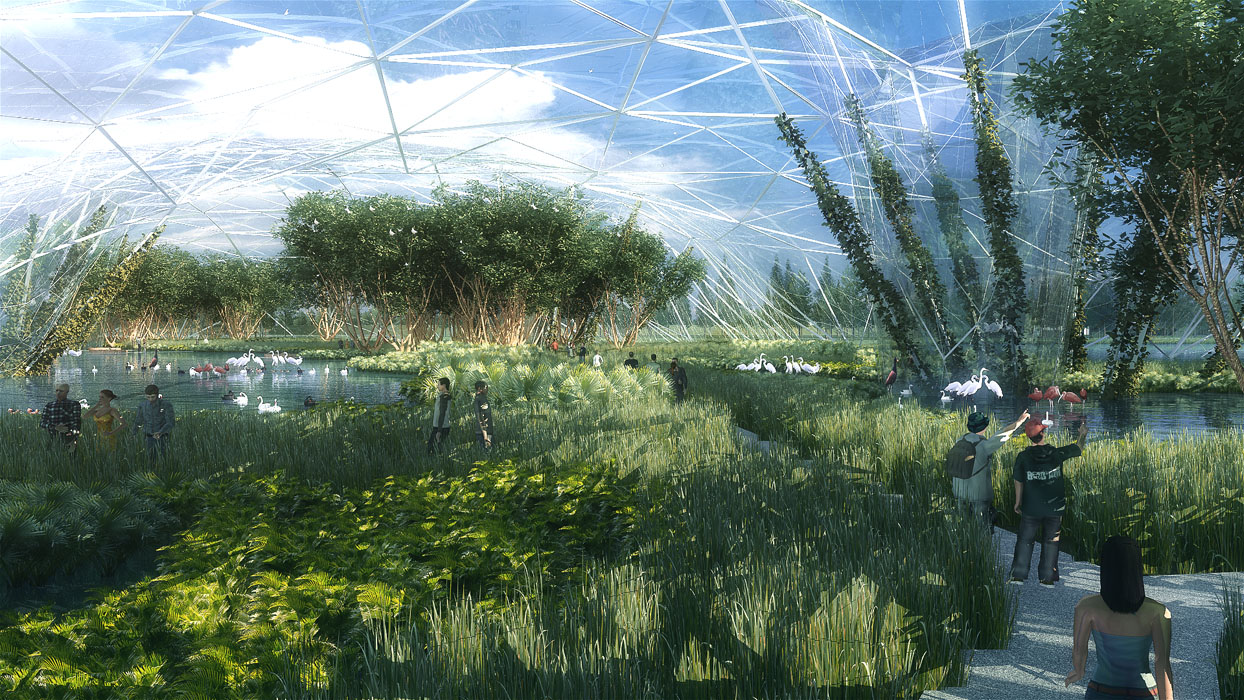Wuhan Tianhe Airport International Wetland Eco-Livable Demonstration Area Planning
Project Information
- Project Location:
- China Wuhan, Hubei
- Project Scale:
- 160 Square Kilometers
- Design Time:
- March 2018
Project Profile
1. Project Statement
This project involves the conceptual planning and design of a 160-square-kilometer area in the Dongxihu District of Wuhan, including detailed construction planning for the Fuhe Wetland Park and the Yueya Lake area.
2. Objective and Challenge
Challenge 1: Addressing the deteriorating ecological environment
In recent years, urban areas have experienced frequent flooding despite a reduction in lake areas. Wuhan, located in the middle reaches of the Yangtze River with abundant river and lake resources, initially had 127 lakes in its central urban area at the founding of the People's Republic of China, ensuring sufficient drainage capacity. However, over the past 30 years, urban construction has increased by over 200 square kilometers while lake areas have decreased by nearly 230 square kilometers. Today, only 38 natural lakes remain.
Strategy 1: Responding to the national "Two Mountains Theory" and the directives of the 19th National Congress of the Communist Party of China, revitalizing rivers and lakes, integrating ecological elements into urban areas, promoting harmonious development between humans and nature, restoring the ecological pattern and environment of the historical Yunmeng Marsh, and establishing a demonstration zone for ecological management of flood-prone areas in the Yangtze River Basin.
Challenge 2: Integrating with existing industrial resources to create innovative industries for future development and achieve industrial upgrading goals.
Strategy 2: Pioneering the ERBD (Eco-Resort Business District), creating a leisure and business cluster based on the ecological mega-marsh.
3. Design Strategy
Establishing a secure ecological water system, restoring the unique Yunmeng wetland habitat landscape.
a) Researching the historical changes of ancient Yunmeng Marsh and its relation to our site.
b) Studying the current water systems, ponds, and lakes.
c) Simulating flood areas, establishing a rainstorm safety pattern.
d) Designating urban development reserve land and non-buildable areas based on ecological green lines.
e) Streamlining existing water systems for effective connection and diversion, establishing an internal river system.
f) Increasing drainage areas around existing lakes, forming a pond system.
g) Establishing wetland retention areas to enhance overall water storage capacity.
h) Overlaying a dense water network wetland structure to create a distinctive Yunmeng Marsh ecological water system.
i) Constructing multiple habitat vegetation communities to facilitate natural succession on the site.
Creating Wuhan's ecological leisure and business industry economic center based on ecology.
a) According to Wuhan's 13th Five-Year Plan, the site is located between the Lin Kong Sub-city and the Western New City cluster, a crucial area for the urbanization development axis.
b) According to Wuhan's tourism development pattern of "one center, one axis, four districts, and one belt," the site is located in the recreational belt around the city, providing excellent opportunities for the development of eco-leisure and holiday tourism.
c) The site is located in the Lin Kong Economic Development Zone, one of Wuhan's four major functional zones, east of the national network security talent and innovation base, focusing on aerospace manufacturing, network security, big data, and modern food industries. The project aims to attract high-tech, new energy, smart manufacturing, and related industries, using high-tech, business services, and tourism industries as engines to create Wuhan's largest tourist resort destination and the best leisure location for Wuhan citizens on weekends.
d) Based on ecology, on the foundation of "ecology +", build an industrial layout of "one island, one town, one town, one industry", setting up industrial islands related to high-tech, business services, and tourism industries.
e) Combining the three industries to build a comprehensive tourism system and establish a complete tourism product system.
Overall conceptual planning
a) Streamlining the existing road system, adding slow-moving systems and service points.
b) Planning the land use nature of the site and determining the area of various construction lands.
Yueya Lake Wetland Park Area Planning ---- ERBD First Trial Zone, Core Drive Engine
a) Streamlining current water systems and transportation.
b) Dividing functional zones and layout of functional facilities.
c) Based on Dr. Yu's concept of functional islands overlaid with central landscapes, design two types of small islands: ecological industrial towns and commercial towns, forming multiple development clusters.
d) Determining the development direction and industries of each cluster.
e) Determining product systems and core products.
Dongfengyuan Fuhe Wetland Park Area Concept Planning ---- ERDB Tourism Core, Ecological Management Demonstration Zone
a) Setting up ecological purification conservation areas, science education exhibition areas, and wetland sightseeing leisure areas to meet the needs of rain and flood purification, land reclamation, and leisure tourism.
b) Streamlining existing transportation, setting up recreation loops and scenic walkways.
c) Streamlining current water systems, core area re-ponding and lake reclamation, creating natural wetland landscapes, and reshaping surrounding ponds to form a continuous purification system.
d) Building a complete product system and core products to meet wetland tourism needs such as sightseeing, experience, science education, study tours, and leisure.
4. Conclusion
Through the restoration of the project's ecological base and the creation of an industrial cluster, the innovative proposal of the ERBD International Leisure and Business District concept, and the restoration of the millennium Yunmeng Marsh habitat, the beautiful vision of "Ten thousand miles of marshland welcomes visitors at the new port of Bizhou" is realized.
